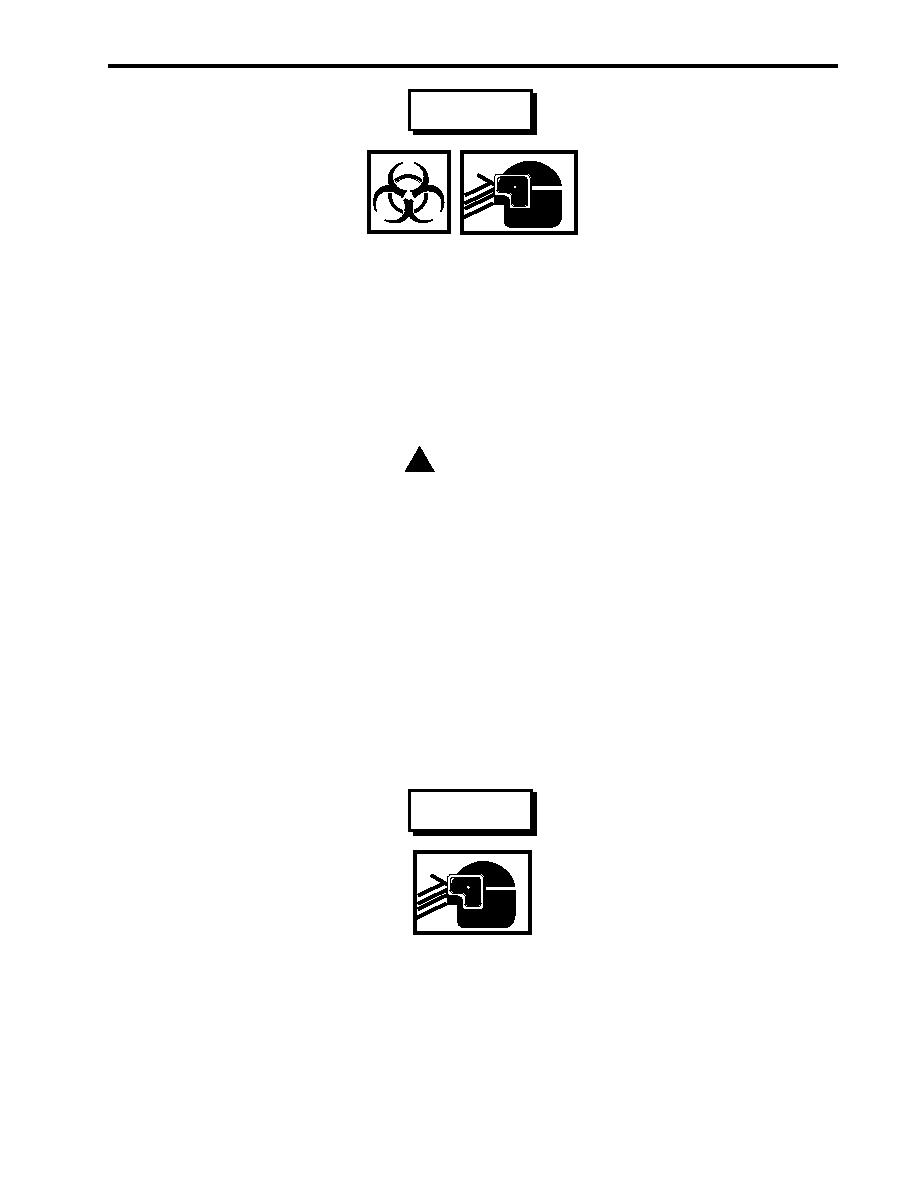
TM 55-1925-284-14&P
0032 00
WARNING
Sewage is a common mode of transmission for parasitic organisms that may
have the capability of causing communicable diseases. After coming in contact
with sewage or contaminated equipment, be sure to clean yourself with a disin-
fectant soap. Avoid sewage contact with skin abrasions, punctures, cuts, and
other open wounds. Wipe up and clean any spills and/or contaminated equip-
ment using a disinfectant soap. Failure to comply can result in illness or death.
6. Loosen the drain plug (figure 2, item 2) in the strainer (figure 2, item 1) and allow any effluent to drain into the
suitable drain pan.
! CAUTION
Never attempt to disconnect union connections with only one wrench. Damage to the
vessel's standing piping or to the valve's piping could occur. Always use two wrenches.
7. Using two wrenches, disconnect the inlet union (figure 2, item 3) from the strainer inlet fitting (figure 2, item 4)
of the strainer (figure 2, item 1).
8. Using two wrenches, disconnect the outlet union (figure 2, item 5) from the strainer outlet fitting (figure 2, item 6)
of the strainer (figure 2, item 1).
9. Remove the strainer (figure 2, item 1) from the piping (figure 2, item 7).
10. Remove the strainer inlet and outlet fittings (figure 2, items 4 and 6) from the strainer couplings (figure 2, item 8).
Retain the strainer inlet and outlet fittings for later installation.
ASSEMBLY
WARNING
Removing components by means of wire brushing produces flying particles. These
particles can cause serious injury to personnel. Protective goggles, gloves, and
long sleeves must be worn at all times during wire brushing operations. Failure
to comply with this warning can result in serious injury or death to personnel.
1. Clean the male threads on the strainer inlet and outlet fittings (figure 2, items 4 and 6) using a wire brush.
2. Apply antiseizing tape to the male threads of the strainer inlet and outlet fittings (figure 2, items 4 and 6).
0032 00-3

